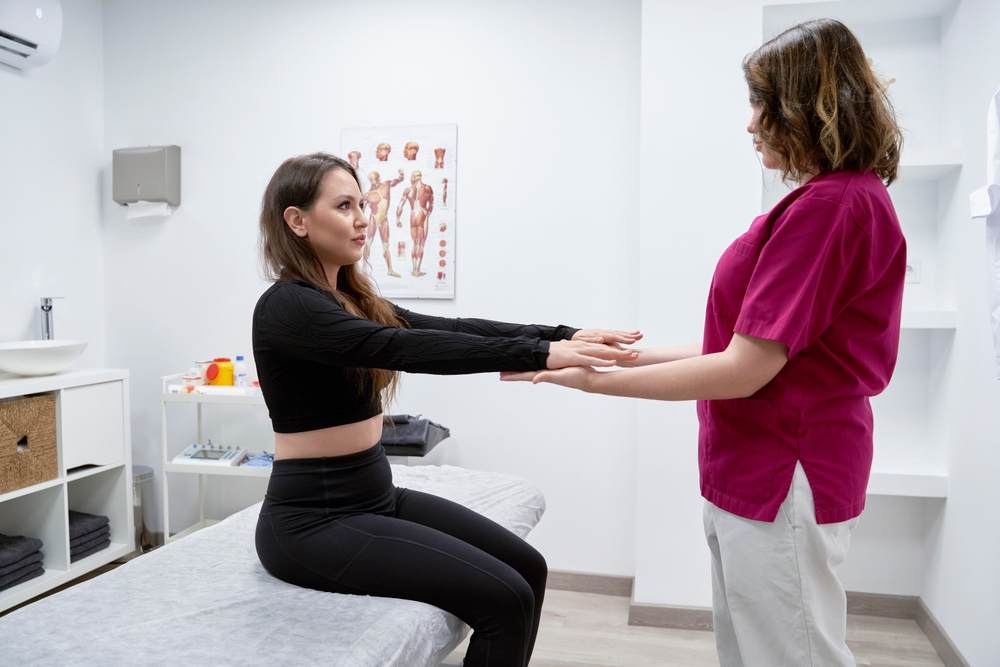 It’s no secret that if you’ve been in a car accident, immediate and competent medical care is critical. Not only will you need to address any serious or obvious injuries, but many car accident-related problems can remain hidden for days after the event, wreaking havoc on the body. Seeking proper care can both help your body heal as well as help you achieve a fair insurance settlement where needed. But not all care is created equal, especially when it comes to car accident care.
It’s no secret that if you’ve been in a car accident, immediate and competent medical care is critical. Not only will you need to address any serious or obvious injuries, but many car accident-related problems can remain hidden for days after the event, wreaking havoc on the body. Seeking proper care can both help your body heal as well as help you achieve a fair insurance settlement where needed. But not all care is created equal, especially when it comes to car accident care.
One of the most common forms of treatment for these injuries is physical therapy, or physiotherapy. But this care can be both active or passive, and it is important to understand the difference and which one may be best for you.
What Is Physical Therapy?
In basic terms, physical therapy is care that aims to relieve pain and help a patient move, function, and live better through the use of hands-on exercises and techniques. This is an umbrella definition for a form of care that can apply to many health problems and come in many forms.
Physical therapy can commonly be used to recover from surgery and regain strength, adapt to a new tool like an artificial limb or walker, prevent disability, or improve movement after an injury. One common thread among all types of physical therapy is that the goal is not always to completely reverse or heal an underlying cause of pain and dysfunction but to help the patient return to the highest level of functioning that they can.
When you present with injuries related to a car accident, a physical therapist may not be the first person you see. Orthopedists, neurologists, chiropractors, and even emergency care doctors may be the first ones to identify a condition and create a plan to treat the direct issue. However, your recovery will likely include physical therapy at some point to help ensure the healing process goes well, and you return to your pre-accident condition as much as possible.
Meeting with a physical therapist usually includes a physical examination as well as a discussion about your symptoms and history. Depending on the condition you present, they may also ask you to perform basic tasks like walking or using stairs to identify how well you can move. This information helps them work with you to create a treatment plan.
While physical therapy will typically use a variety of treatments for a holistic approach, there are two overall categories of care: active and passive.
Passive Car Accident Care
Passive car accident care is a form of physical therapy where the doctor, rather than the patient, does the majority of the work. In this scenario, the treatment is being done to the patient rather than by them. This is not always a negative thing, as some important treatment options are considered passive.
For example, the use of pain medication and other medications is considered passive care. The doctor prescribes these, which the patient dutifully takes for a good outcome. While this is not likely to be the only necessary treatment, medication can be important in physical therapy. Reducing pain, inflammation, and other conditions can make it safer and easier to perform the necessary exercises to regain strength. Other examples may include applying heat to sore muscles or alternative therapies like acupuncture.
Some exercises are also considered passive care, typically those that focus on improving range of motion. During these exercises, the patient doesn’t exert any physical effort. Instead, the physical therapist moves their body for them gently to help teach the muscles and joints how to function properly.
It is common to start with passive exercises when an injury is newer, as it can help loosen tight muscles and improve joint mobility before you are expected to participate in more active movement. These movements can stimulate and improve blood flow to the injury, which speeds up healing. When this is done consistently, the connections between the brain and muscles can be rewired in a way that has positive effects.
Because of the tight connection between your brain and body, it is important to remain engaged during passive exercise. Keeping yourself focused on the movement can help it to be more beneficial.
Active Car Accident Care
 In contrast to passive care, active physical therapy is any form of treatment where the client is physically involved. Some practitioners will refer to this as “self-care,” meaning the patient advocates for themselves and is a part of their own care process. The expectation is that a patient in active care will be proactive in their treatment, both at home and in the office, and take the necessary steps to heal. This relies on a commitment from the patient and a sense of ownership of their own health.
In contrast to passive care, active physical therapy is any form of treatment where the client is physically involved. Some practitioners will refer to this as “self-care,” meaning the patient advocates for themselves and is a part of their own care process. The expectation is that a patient in active care will be proactive in their treatment, both at home and in the office, and take the necessary steps to heal. This relies on a commitment from the patient and a sense of ownership of their own health.
Visiting a doctor and seeking care after a car accident is itself a form of active care because it shows initiative for your health. A treatment plan is then developed in collaboration with both doctors and patients, taking into account what the doctor recommends and what the patient feels capable of doing.
When it comes to exercises and physical therapy, this usually means that the patient will purposefully engage in and exert physical effort to perform any movements. Depending on the injury, this can include stretching, resistance exercises, low-impact aerobic exercise, strengthening exercises, and any others. Engaging in these exercises can help strengthen muscles, prevent atrophy, and improve things like balance and flexibility.
Along with these exercises, an active care plan may include things like walking on a treadmill or using a stationary bike at home, following a certain diet, or avoiding certain activities that could make an injury worse.
In some cases, active care is also considered preventative medicine and can be used to avoid health issues before they arise. For example, many athletes undergo physical therapy to prevent injury during their sport, and this would be an active approach to their care. When it comes to car accidents, there is less of a direct prevention method involved, though some therapies could help the muscles be stronger in the face of great impact.
However, once an injury has occurred, active care can be preventative in the future. Many common injuries that stem from car accidents have a high risk of recurring, and physical therapy can help guard against that by healing the problem and developing strength in those same areas. Often, patients also leave therapy with improved balance and posture, which could prevent other car accident injuries to the musculoskeletal system in the future.
Choosing the Right Treatment After a Car Accident
 The consequences of car accidents can be broad – some people may suffer no physical harm, but face anxiety or PTSD from the incident, and others may experience severe bodily injury as a result of an accident. While some injuries, like whiplash and concussions, are very common, there are also a huge range of injuries that can result from an accident.
The consequences of car accidents can be broad – some people may suffer no physical harm, but face anxiety or PTSD from the incident, and others may experience severe bodily injury as a result of an accident. While some injuries, like whiplash and concussions, are very common, there are also a huge range of injuries that can result from an accident.
Your diagnosis and its severity will be the first factor in determining the right treatment for you. In some cases, emergency care will be needed to prevent further injury or even save the life of a car accident victim. But in more mild cases, or once the immediate health needs have been addressed, patients can determine who will best serve them in their care.
Physical therapists are often a part of this care team, especially when injuries are related to the musculoskeletal system. By focusing on strength, balance, flexibility, and similar issues, physical therapy can help prevent chronic pain or worsening injuries from developing. But often, physical therapy is best used in conjunction with other practitioners.
Chiropractors, pain relief specialists, orthopedists, neurologists, and even surgeons may all be a part of a holistic care team. By choosing a diverse team, you will be able to ensure that all potential injuries and conditions are being addressed and that treating one does not cause harm in another area. This prevention is another key element of active care.
It is likely that your treatment plan includes some elements of passive care followed by active care. It is always important to ask questions of your doctors, understand their recommendations, and discuss anything you feel is a limitation or doesn’t make sense to you. Building a plan that you can be successful in is critical to your healing.
At AICA Snellville, our team includes all of these specialists and more, with a particular focus on car accident care. Our goal is for each patient to feel empowered when they visit with our clinical staff, and we will always walk you through your comprehensive treatment plan to ensure it meets your expectations.
Whether you have just been in an accident or are suffering the lingering effects of a previous injury, AICA Snellville is here to help. The first step in taking control of your health and being proactive is to contact us today to schedule your first appointment and begin working towards relief.
